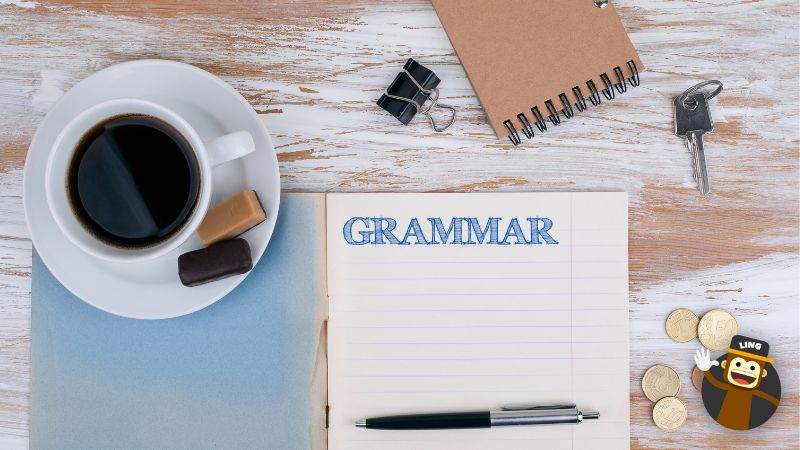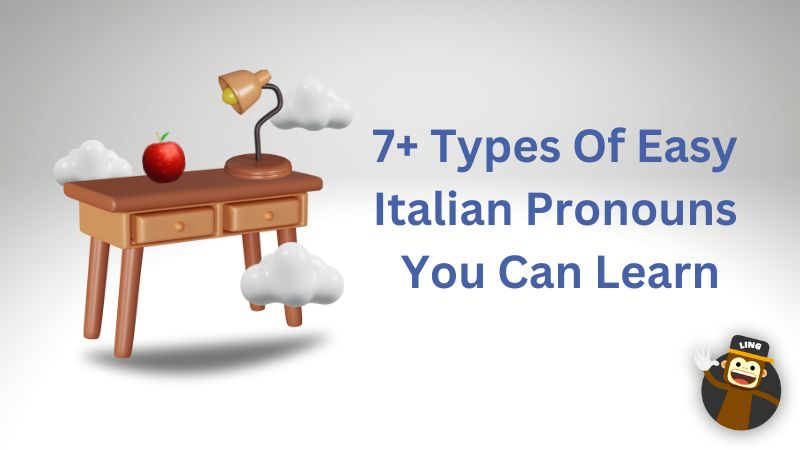Would you like to learn Italian pronouns? Grammar can sometimes be boring, but it is necessary to learn how to correctly speak or write the language so that others can understand what you are saying.
Mastering Italian pronouns require only a bit of work to understand the difference between the various types and when they should be used. This article covers Italian pronouns in detail.
The Different Types Of Italian Pronouns
The pronoun is a speech particle that replaces an element of the sentence to avoid unnecessary repetition and make the text smoother. “Pronoun,” in fact, comes from the Latin “pro-nomen” and is more or less translatable as “instead of the name.”
This does not mean, however, that this particle replaces nouns only. The pronoun can also be used in place of another part of speech (an adjective, a verb, or even another pronoun) or even an entire sentence.
Pronouns are classified according to the context and the type of meaning they assume within the text.
1.Personal Or Italian Subject Pronouns
Italian personal pronouns are the most recognizable ones because, keeping faith with their Latin derivation, they replace nouns. They are the subject pronouns in Italian:
- Io – I
- Tu – You
- Lui– He
- Lei – She
- Esso/Essa – It
- Noi – Us
- Voi – You
- Essi – They
Depending on the function, they differ between personal subject pronouns and personal complement pronouns.
2.Italian Possessive Pronouns
A possessive pronoun tells us to whom the sentence’s element belongs. They look like adjectives, but they have completely different functions. For example:
- Our (adjective) shirt is blue, and your (pronoun) is red.
Here are possessive pronouns:
- Mio/Mia – Mine
- Tuo/Tua – Yours
- Suo/Sua – His/her
- Nostro/Nostra – Ours
- Vostro/Vostra – Yours
- Loro – Theirs
Remember that in Italian, you have to use the feminine or the masculine form depending on the object or name you are referring to.
3.Demonstrative Pronouns In Italian

Demonstrative pronouns indicate the position in space and time with respect to the person speaking or listening. For example:
- This sweater (next to the speaker) I bought in America.
Here are some common Italian demonstrative pronouns:
- Questo/a – This
- Codesto/a – This
- Ciò – That is
- Colui/Colei – He/she
- Costui/Costei – This one
- Coloro – Those
- Quello/a – That
4.Italian Relative Pronouns
Relative pronouns in Italian relate two different propositions to each other.
- Laura ha sentito Marco che parlava al telefono (Laura heard Marco talking on the phone)
Here the “che” replaces the name of Marco and joins the two sentences.
Examples of relative pronouns:
- Che – That
- Cui – Which
- Il quale – Who
- Chi – Who
Che
It replaces the subject or the object complement. It is invariable.
For instance:
- Il ragazzo che lavora al supermercato è simpatico – The boy works at the supermarket → CHE replaces the subject
Another thing to remember is that “CHE,” preceded by the definite article “IL,” replaces an entire sentence.
For instance:
- Ho litigato con mia moglie, il che mi rende nervoso – Having a fight with my wife makes me nervous
CUI
It replaces any other complement. Therefore it is always introduced by a preposition based on the verb used.
For instance:
- Maria è la persona a cui penso sempre – Maria is the person I always think about
In this case, it replaces “Thinking About Someone.”
- Ho comprato il libro di cui mi hai parlato – I bought the book you told me about.
In this case, it replaces “Talk about something.”
“CUI” preceded by a definite article expresses “possession”: the definite article must be agreed in gender and number with the object or person possessed.
For instance:
- Marco, il cui cane è un barboncino, è francese – Marco, whose dog is a poodle, is French.
In this case, it means “His dog is a poodle.””
IL QUALE
It plays the same role as CHE and CUI. Therefore it replaces subjects and complements. But it is a bit more formal and, therefore, typical of written language. It agrees in gender and number with the name it refers to.
There are 4 possible forms:
- IL QUALE (masculine, singular)
- LA QUALE (feminine, singular)
- I QUALI (masculine, plural)
- LE QUALI (feminine, plural)
CHI
It combines two sentences and means “the person who / the people who,” “the people who,” and “all those who.”
For instance:
- Chi vince oggi, va in finale – Who wins today goes to the final
In this case, “who” means “The person who / The people who win today go to the final.”
5.Exclamation Pronouns In Italian
They introduce an exclamation sentence, which expresses a strong emotion of joy, amazement, fear, etc.
For example:
- Che noia! – How boring!
The exclamation pronouns in Italian are:
- Chi – Who
- Che – What
- Quale – Which
- Quanto – How much
6.Indefinite Pronouns In Italian

They refer to an element without specifying its quantity or quality. They are:
- Uno – One
- Qualcuno – Someone
- Alcuni/e – Some
- Molti – Many
- Nessuno/a – No one
7.Reflexive Pronouns In Italian
A specific category of personal pronouns is “the reflexive pronouns.”
Italian reflexive pronouns are used with those verbs in which the action is reflected on the subject who performed the action,
For example:
- Luke combs himself
- Maria washes herself
In Italian, the reflexive pronouns are:
- Mi – Myself
- Ti – Yourself
- Si – Himself/Herself/Itself
- Ci – Ourselves
- Vi – Yourself
- Li – Themselves
8.Italian Direct Object Pronouns (or simply Direct Pronouns)
Direct pronouns have the role of object complement. They are used, therefore, when the verb is not followed by any preposition and answers the question “Who? What?”.
For instance:
Anna compra il libro (Anna buys the book) = Anna lo compra (Anna buys it)
In this case, the direct pronoun “lo” replaces the object complement: “the book”.
Here are the Italian direct object pronouns:
- Mi – Me
- Ti – You
- Lo/La – Him/Her/It
- Ci – Us
- Vi – You
- Li, le – Them
9.Italian Indirect Object Pronouns (Or Simply Indirect Pronouns)
Indirect pronouns perform the function of term complement. They are therefore used when the verb is followed by the preposition “a” and answer the question “To whom? To what?”.
For instance:
- Miriana ha telefonato a Luca (Miriana phoned Luca) = Miriana gli ha telefonato – Miriana phoned Luca = Miriana phoned him
In this case, the indirect pronoun “gli” replaces the complement of the term: “a Luca.”
Would you like to know more about Italian pronouns and language?
Learn Italian With Ling App

Now that you master Italian pronouns, you can learn to speak Italian with the help of the simple tool, the Ling App.
With Ling, you can learn Italian grammar and how to speak in a grammatically correct way. If you want to learn other languages, you can choose between 60 different options.
Do you want to learn more about Italian culture? Check out Italian Numbers And Countingand Italian birthday phrases.
What are you waiting for? Download it from App Store and Play Store for free!



































































